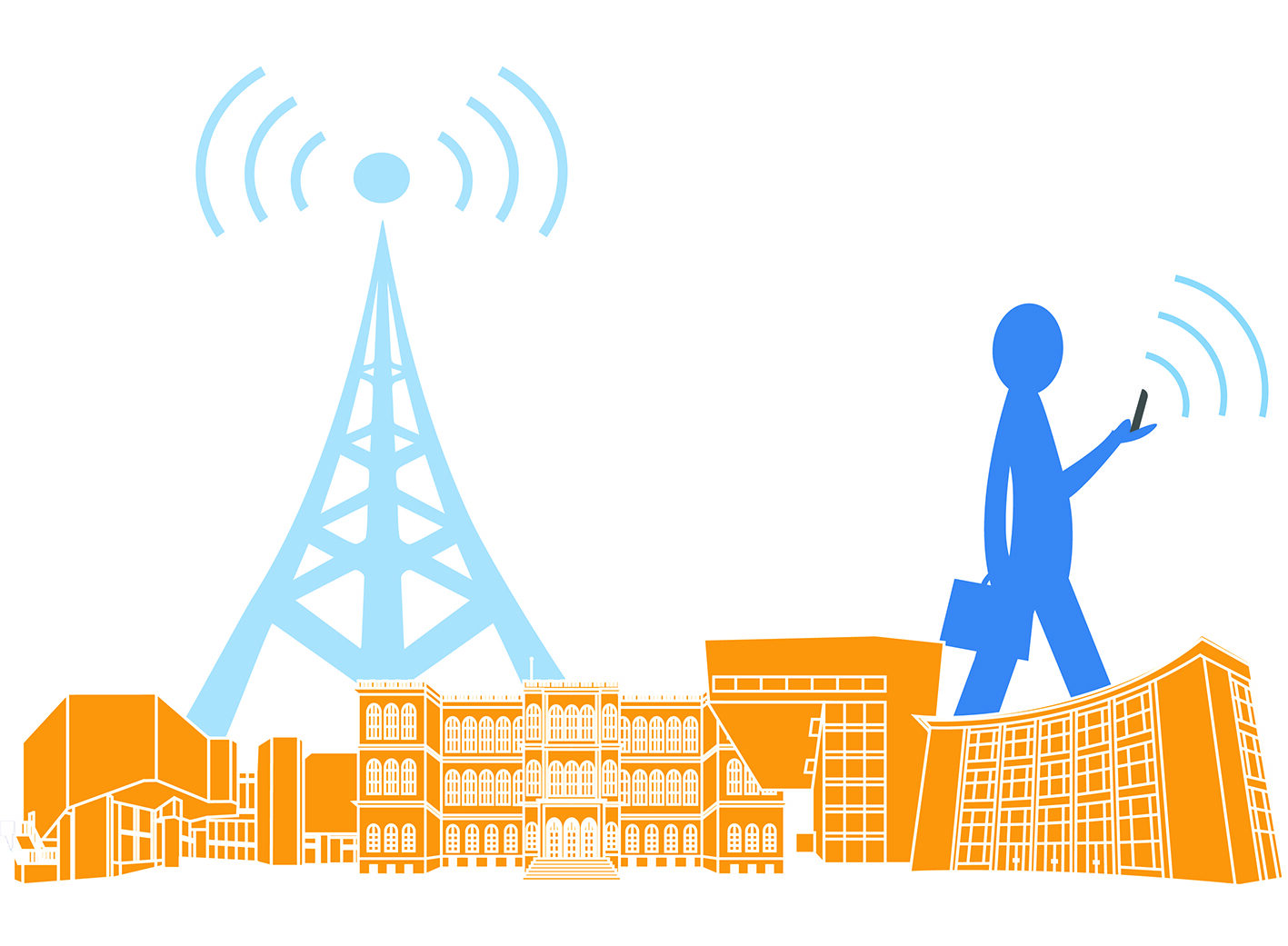What are mobile campus networks?
Mobile campus networks are characterised by locally or regionally limited network coverage and administration. Mostly, these networks are based on mobile radio technology and are usually used by industrial companies or university institutions for their individual needs and requirements. These networks are managed either by the company concerned, the university itself, a commissioned telecommunications operator or a network supplier. A combination is also possible.
What technology can be used to implement mobile campus networks?
Everyone is familiar with WLAN at home or at public hotspots. All WLAN transmitters share the same frequency band and can therefore influence and interfere with each other.
Mobile phone networks (GSM) are also familiar – operated by service providers. They use their own frequency ranges, exclusively allocated by the BNetzA. Within these frequency ranges, there is no mutual overlapping and virtually no interference. It is precisely these circumstances that must be taken into account when planning private campus networks.
Radio systems operating in unlicensed frequency bands with uncoordinated access procedures (e.g. WLAN) are only suitable to a limited extent for mission-critical applications. In contrast, classic mobile radio technology (GSM) is based on centralised control of radio resources. This enables high quality of service and high reliability and data security.
5G versus WLAN
With the introduction of 5G mobile communications, campus networks based on 5G became increasingly popular. At about the same time, a new WLAN technology became market-ready. From the previous standard IEEE 802.11ac /WLAN AC, there was a leap to the faster IEEE 802.11ax – the WLAN AX – commonly known as Wi-Fi 6. This meant that two radio technologies were facing each other, which in principle would be suitable for setting up campus networks.
It is difficult to decide which of the two radio technologies is more suitable. Both technologies are very different, but are becoming more and more technically similar. Weighing up the costs and benefits is usually the deciding factor.
The decision as to which radio technology is the right one for the respective campus network must be based on whether the technical requirements of the network require an exclusive allocation of the frequency spectrum or whether a frequency spectrum with general allocation is sufficient.
The features:
- Mobile radio technology
In an allocated frequency range for the use of mobile radio technology, one is able to meet all the technical requirements of the network at all times. Above all, latency and speed. This is offset by high effort and high costs.
5G mobile radio can be optimised for specific requirements (e.g. latency, energy consumption, data rate, frequency range). - WLAN
The frequency ranges that can be used for WLAN are subject to general allocation. This means that you may be sharing the network with many other users whose behaviour and applications you have no influence over. On the other hand, there is less effort involved in setting up the network and lower costs for operation and equipment.
In existing WLAN networks, access points can be exchanged without regard to different client solutions. WLAN technology is downward compatible.
Conclusion
With an allocated frequency spectrum, many performance parameters can be defined and guaranteed. If that is the requirement, there is usually no way around mobile radio technology (GSM, 5G). In an industrial environment, mobile radio technology will be the preferred choice, while in an office environment, WLAN technology will be the preferred choice. While in the industrial sector you can get all the 5G advantages with a new investment, in a typical office environment you will tend to go for WLAN, as the equipment park here is anything but homogeneous.
Responsible for the content of this article is Frank Meeßen





